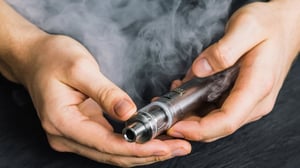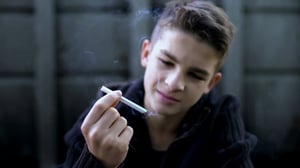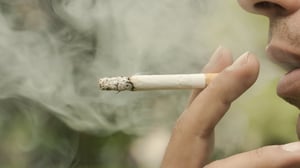
Danger of Secondhand & Thirdhand Smoke
SECONDHAND SMOKE
Exposure to secondhand smoke is a leading cause of preventable death in the United States.
Secondhand smoke is the combination of smoke from the burning end of the cigarette and the smoke breathed out by smokers. When a person smokes near you, you inhale the same dangerous chemicals they do. Breathing secondhand smoke can make you sick and is especially dangerous for children and those who are immunocompromised or have respiratory conditions.
Secondhand smoke is dangerous and deadly. Here are a few important facts to keep in mind when talking about the dangers of secondhand smoke:
- Secondhand smoke causes lung cancer.
- Secondhand smoke causes heart disease in non-smokers.
- Secondhand smoke causes stroke in non-smokers.
- Secondhand smoke can cause heart attacks.
- Separate “no smoking” sections do not protect you from secondhand smoke.
- Ventilation, air conditioning, air purifiers or opening a window does not protect you from secondhand smoke.
Children, pregnant women, seniors and people with heart or breathing problems should be especially careful. Being exposed to secondhand smoke, even for a short time or while outdoors, can hurt your health. Some effects are temporary, but others are permanent.
There is NO safe level of exposure to secondhand smoke.
THIRDHAND SMOKE
Thirdhand smoke is the invisible combination of particles and gases that cling to a smoker’s hair and clothing.
This toxic chemical residue sticks to cushions on couches and chairs, carpeting, curtains, blankets, stuffed toys, walls and every other surface in a house or car.
Even after secondhand smoke has completely cleared, these dangerous chemicals remain. The sticky residue contains cancer-causing chemicals, heavy metals, carcinogens and other harmful substances people (even pets) can get on their hands and clothes.
- Thirdhand smoke is especially dangerous to children.
- When infants and babies breathe, crawl, play with and put their mouths on contaminated surfaces, they ingest leftover toxins at a much higher rate than adults.
- Exposure can cause lung problems like wheezing and asthma.
Exposure has been linked to slower healing, learning and behavior problems.
For more on the dangers of second and thirdhand smoke:
Secondhand smoke factsEXPLORE THE TOBACCO TOOLKIT





Develop a strong tobacco-free policy for your school.
Explore Policies

Big tobacco targets vulnerable people, such as our South Dakota youth.
Read about targeting
You don't even have to be a smoker yourself to be at risk.
Explore Dangers
Activities can make a huge difference when implementing a tobacco-free policy.
Explore Activities



